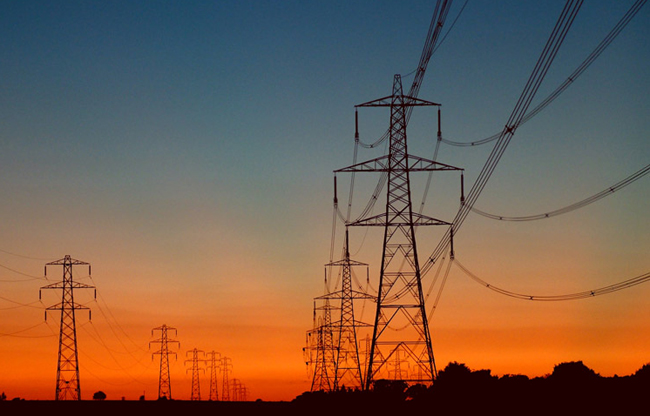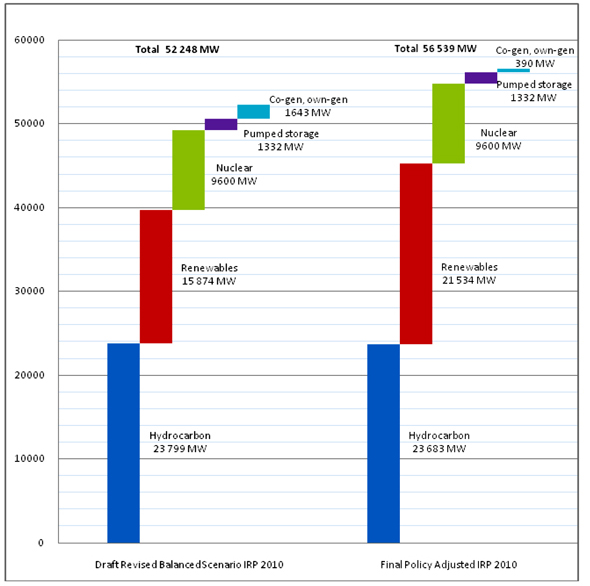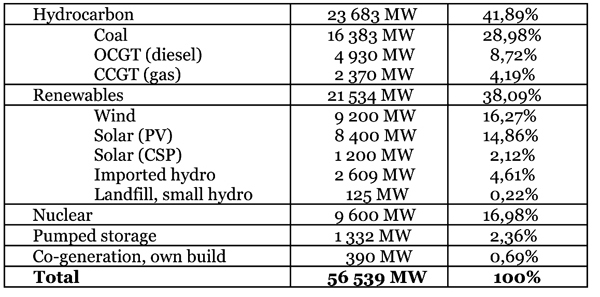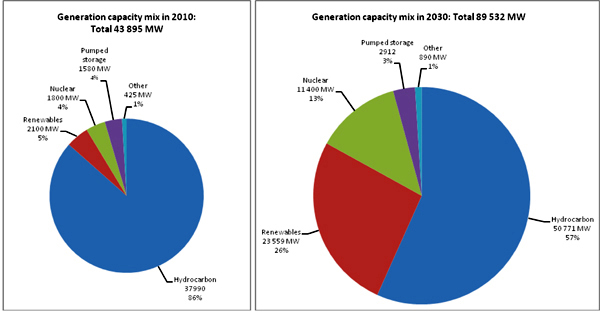Business Maverick, Politics, Sci-Tech
Huge renewable, nuclear build ahead for SA, but coal is here to stay

At long last, the cabinet has approved and published the national Integrated Resource Plan for electricity. Now this has to be passed by Parliament and published in the Government Gazette. Let’s hope there will not be further delays and a measure of certainty will prevail so the electricity sector can get down to work. By CHRIS YELLAND.
Officially abbreviated to IRP 2010, the plan forecasts South Africa’s electricity demand up to 2030, and determines how this demand is to be met. It sets out the generation technologies to be used and the planned mix of primary energy options over this period, such as the mix between hydrocarbon (coal, gas, diesel), renewable (hydro, wind, solar), nuclear, pumped storage and other power generation technologies.
IRP 2010 enables the necessary short-, medium- and long-term investment, funding and business plans to be developed and sets the electricity price trajectory for years to come.
As Eskom and the power-generation sector is the biggest emitter of carbon dioxide in South Africa, the selection of appropriate technology and primary energy options through IRP 2010 gives effect to government policy commitments for the reduction of carbon dioxide emissions to mitigate the effects of climate change.
Though not cast in stone and subject to periodic review, IRP 2010 is clearly an important country plan critical to security of electricity supply and economic growth in South Africa. It sets long-term investment directions and decisions valued in excess of R1,7 trillion over the next two decades.
As such, its formulation and development requires openness and transparency, with participation and input from central and local government, civil society, mining, industrial, commercial, business and consumer stakeholders, to achieve the necessary legitimacy, credibility and accountability.
The process began with the establishment of a technical task team early in 2010. After stakeholder input on a number of economic and planning assumptions (i.e. the so-called input parameters), and a subsequent modelling process by Eskom, the draft IRP 2010 was published in October for public comment and feedback.
The draft presented a number of scenarios, with the technical task team recommending the so-called revised balanced scenario as an appropriate balance between the need to significantly reduce carbon dioxide emissions and enable a viable renewable energy sector in South Africa, while trying to contain prices to avoid damage to the economy, loss of jobs and undue social hardship. This scenario proposed 52, 248MW of new generation capacity by 2030, with a technology mix as shown in Fig. 1.

Fig 1: New build technology mix: Draft Revised Balanced Scenario IRP 2010 vs. Final Policy Adjusted IRP 2010.
As might be expected the public hearings on the draft were intensely debated and drew widespread criticism. While some slammed the process and the technical task team for being dominated by a narrow group of Eskom and energy intensive mining and resource stakeholders with significant vested commercial interests, others argued the development of IRP 2010 had been the most participative and transparent electricity planning process in the history of South Africa.
After the public hearings, some more submissions and further modelling, IRP 2010 was presented to the government interdepartmental committee on energy for further work and adjustments based on political, economic, social and environmental policy considerations, and this was approved on 16 March.
This final policy adjusted IRP 2010 increased the new generation capacity build over the next 20 years from the 56,359MW, with a somewhat revised technology mix, as shown and compared in Fig. 1. This capacity increase reflects a greater emphasis on and commitment to renewable energy using solar photo-voltaic, concentrating solar and wind generation technologies, as shown in Table 1.

Table 1: New-build technology mix: Final Policy Adjusted IRP 2010.
By adding the new-build technology mix of the final IRP 2010 for the next 20 years to the current generation technology mix in South Africa, and then subtracting the generation components that are to be decommissioned by 2030, one can see clearly the generation capacity growth and technology trends envisaged for South Africa over this period, as shown in Fig. 2 and Fig. 3.

Fig 2: The size and mix of the South African generation capacity pie – 2010 to 2030: Final Policy Adjusted IRP2010.

Fig. 3: Growth and mix of generation capacity in South Africa – 2010 to 2030: Final Policy Adjusted IRP2010
So a massive and ambitious new renewable and nuclear build lies ahead, though electricity generation from coal and other hydrocarbons are here to stay, at least for the next 20 years and more. “The road ahead as mapped out in IRP 2010 is ambitious, but do-able,” says Xstrata’s Mike Rossouw, chairman of the technical task team, “but it requires a new mindset. It is definitely not going to be business as usual”. Get ready for a bumpy ride. DM
Chris Yelland is managing director of EE Publishers.
You can download the final Policy Adjusted IRP 2010 (3,77 MB pdf file) here.


















 Become an Insider
Become an Insider